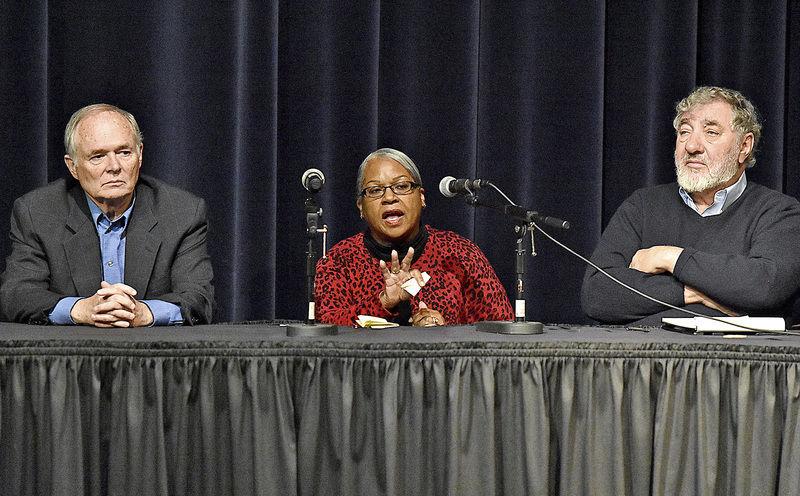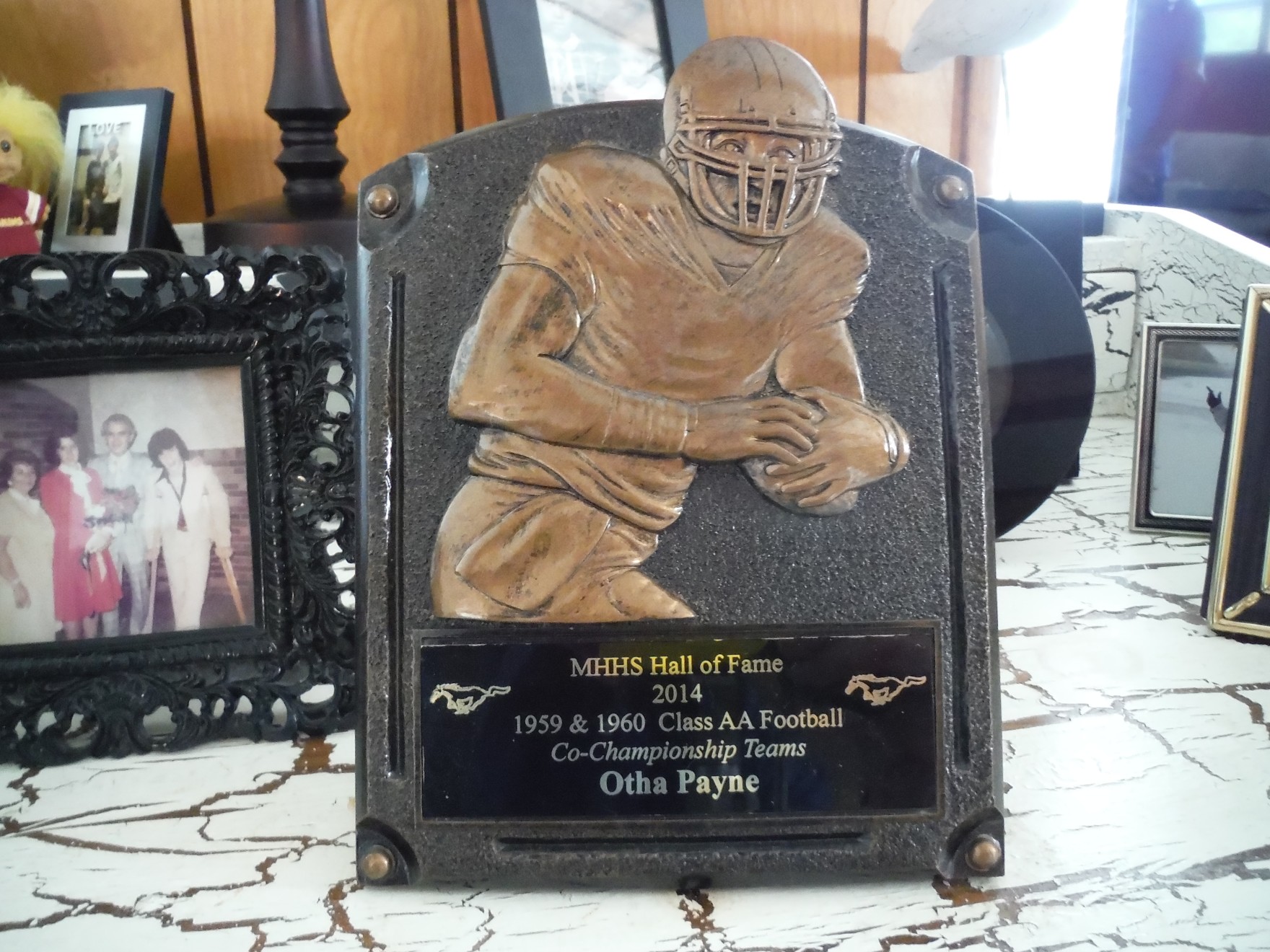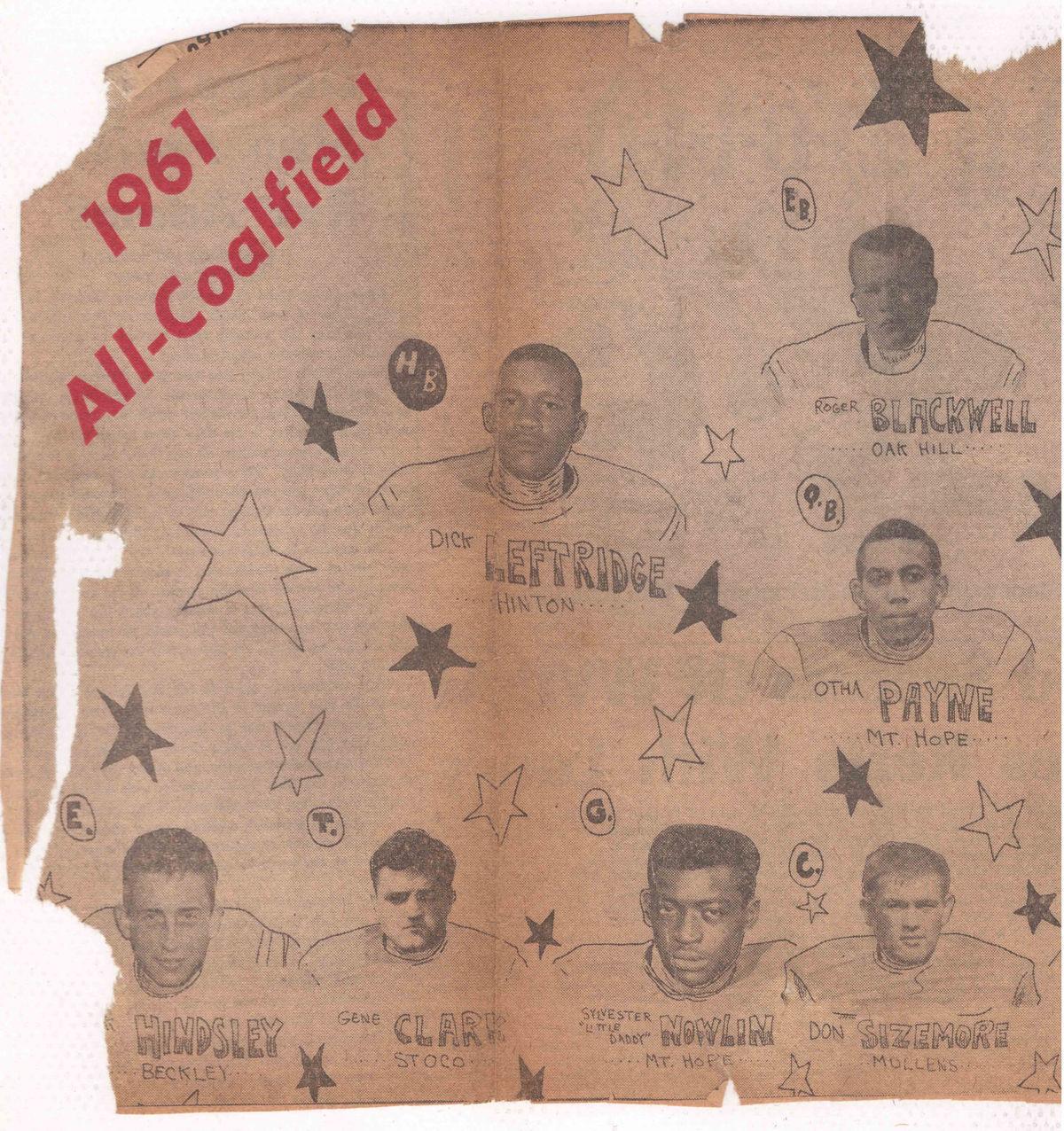Ethel was nurtured and protected by Dave C. and Lucy Caffie who waited many years for her arrival; David Caffie was born in 1893 and was 55 years old when she was born. Lucy Caffie noticed early that Ethel could play songs; she was hearing her play on the piano and immediately provided Piano lessons for her. She took lessons in Mount Hope from Eunice B. Fleming, the first Black person ever to give a master’s recital (1957) and perform at a commencement (1973) at Marshall University. Dr. Ethel Caffie-Austin started playing piano, publicly, at the age of six, accompanying her father during his services at the Word of Truth COGIC, at the age of nine she started directing her first choir, THE SENIOR CHOIR, in her father’s church, and by the age of 14, Dr. Caffie-Austin was organizing and directing the first state choir in Southern West Virginia for the Churches Of God In Christ, bringing together singers from ten congregations of all ages.
Thomas Dorsey, the FATHER OF GOSPEL MUSIC, referred to singing Gospel Music as “singing the good news”. Since childhood, that is exactly what Dr. Ethel Caffie-Austin did. Inducted into the West Virginia Music Hall Of Fame in 2020, Acclaimed as West Virginia First Lady of Gospel Music, coronated as West Virginia’s Queen of Black Sacred Music on November 22, 1995, and West Virginia’s Queen of Gospel Music in 1998, Dr. Caffie-Austin has been sharing the rich and distinctive sound of Black Sacred Music through performance to thousands for decades, in USA Ethel Caffie-Austin has been called and distinguishingly awarded the title “West Virginia’s First Lady of Gospel Music”.
Ethel’s outstanding vocal talents were also noticed early beginning and began to blossom spiritually and secularly while attending Montgomery high school. There her musical talents were sharpened by being the accompanist for the Glee Club. Ethel was involved with the Thespian Club; she debuted and had leading roles in several plays during her high school years. At the urging of her aging parents, Ethel enrolled as a student at the West Virginia Institute of Technology, majoring in English. After graduating from Mount Hope High School in 1967, Ethel’s father discouraged her from pursuing a music career. Instead, she earned an English degree from the West Virginia Institute of Technology . Dr Caffie-Austin was an educator in public schools for more than 30 years. She became involved in education in 1971. As a student at the West Virginia Institute of Technology, Ethel sang and played original compositions with the school’s choral groups and organized gospel groups in four of the state’s colleges and universities, taking them on tour throughout the Eastern and Southern United States. Dr. Caffie-Austin formed The Collegiate Gospel Choir at West Virginia Tech in 1967. Dr. Caffie-Austin was confirmed as an honorary Doctor of Arts Degree in May 1997 by Davis and Elkins College.
She moved to Charleston in 1976 to take a job with multi-CAP, an anti-poverty program. She began teaching piano to children in Charleston’s public housing projects and formed yet another choir, which grew to between 70 and 80 young people. Dr. Caffie-Austin organized a community choir (AKA) Charleston Area Community Choir.Her ministry and music impacted the lives of everyone who participated and traveled with the choir. Her ministry with this choir and Youth on The Move for Christ, which both consisted of a diverse congregate of young people who needed the Lord, was one of the Hallmarks of Dr Austins Evangelistic Ministry during the years of her tenure with these organizations. Many souls were saved and have gone on to become leaders and shakers in diverse ministries all over the world. She organized gospel choirs, gospel groups at different state universities, innumerable festivals, churches and civic organizations, facilitating her tours across the United States and throughout Europe. Her Caffie-Austin workshops all over America and Internationally impacted the spiritual and natural lives of the thousands of participants.
Christ Inspiration Delegation(CID), The Ethel Caffie-Austin Singers AKA was organized in 1978 for the purpose of having a small group of voices to travel and spread the cultural and spiritual messages of Black Sacred Music. Ethel hand-picked the vocalist and musicians who participated in the group, which made traveling a little easier. There are 6 CD Recordings attributed to this group. Music and Faith have formed the core of her life since early childhood. Dr Caffie-Austin has been asked on numerous occasions to cross over to blues. The answer was always a resounding NO, because of the Calling on her life, an extraordinary, anointed command of the gospel piano, her strong vocals, personal mastery of the music, her passionate deliverance of the message in the music, her songs of deliverance, songs of redemption and songs of praise, compel all who hear to an emotional response and life changing decisions.
Ethel’s background as an educator, for 30 plus years in Fayette and Kanawha County School crosses the public and private sectors. She taught in Fayette County Public Schools in Kanawha County Public Schools, substituted in Counties throughout West Virginia Public School System, and taught in the private sector with Charleston’s Opportunities Industries Corporation Dr. Caffie-Austin was the organizer and director of a community arts program sponsored by the City-Wide Improvement Council of Charleston, West Virginia and satellite center in Montgomery, West Virginia. She was a visiting professor in the music department of Davis and Elkins College, a Teagle Fellowship recipient for two years; and
Artist In Residence for Randolph County School and Fayette County Schools from 1994 to 1996. Dr. Caffie-Austin was requested in 1997 by Kanawha County Schools to return to work with students in Capitol Academy, an Alternative High School for “at risk” students who have one last chance to receive an education in the public school system
Dr. Caffie-Austin conducted Folk Life Cultural workshops, residencies and sabbaticals throughout West Virginia, the United States and abroad. The Ethel Caffie-Austin experience was a daylong workshop in which volunteer voices from the community were brought together in a gospel choir, from various churches and all levels of experience, from none to active choir members, culminating the days learning into a public concert. A memorable emotionally moving experience for all. Because of her versatility, Dr. Caffie-Austin had many talents and titles; she focused not only on various styles of Cultural Heritage Music, but she also incorporated historical narratives, slave songs, ring games, and cultural characters into her workshops with an ambition to expose people to various styles of Black Heritage Music. She was the founder and director of WEST VIRGINIA’S BLACK SACRED MUSIC FESTIVAL, which afforded a vast repertoire of cultural heritage wealth to its participants; the festival brought the finest cultural heritage clinicians in the nation to Charleston, West Virginia encompassing all the styles of Black Cultural and Sacred Music in existence. Dr. Caffie-Austin’s’ passion is to pass the old songs and sacred music to this generation so that the rich cultural heritage of the African American Black Heritage and Cultural Music is not lost to this generation. Dr. Ethel Caffie-Austin’s’ broad repertoire enabled her to embrace every style of music from the simplest slave songs to the accompaniment and singing of the most complex symphony.
Always keeping the boundaries of her faith in God in her music in view, Dr Austin has given lifetime service and dedication to her ecumenical ministry. She had been a member of the Church Of God In Christ for her entire life. When she made her home in Charleston, there was no COGIC. Dr. Caffie-Austin prayed and fasted until Good Shepherd COGIC came into existence. The church evolved through several Bishops, Pastors and Ministry Name Changes into Brookside Ministries COGIC in Mt Carbon, WV where Dr. Bruce Hogan was her Pastor. Dr. Caffie-Austin’s dedication to God and her call to “work the works of Him who sent her” found her serving in almost every capacity of her church’s ministry including Pastoring, First COGIC in Kimberly, West Virginia and serving as Associate Pastor at Rimson Memorial Church of God In Christ. She successfully navigated all aspects of her callings and assignments, which she attributed to the Grace of God. Dr Caffie-Austin directed, wrote and arranged the music and narration for two plays relating to black heritage music. She served as Coordinator of the Community Arts Program for the City of Charleston where she developed drama, dance, visual arts, piano, voice and choir opportunities for young adults.
Dr Ethel Caffie-Austin met Rev James Austin while ministering in prison. In 1971, Dr. Caffie-Austin and her musical group performed at the Federal Prison Camp, Alderson (then named Federal Reformatory for Women). After hearing the performance, the warden of the prison, Virginia McLaughlin, soon hired Caffie-Austin as an intern to teach both gospel and secular music in the prison. While directing one of her plays in Charleston, WV. Rev. James K. Austin, who had miraculously been freed, walked into the church where she was directing the musical rehearsal and immediately stated, “Ethel is going to be my wife.” Despite Ethel’s every effort to steer him in other directions, Love won, and they were married on August 14, 1982. Their storybook romance was challenged when he became critically ill on their first wedding anniversary in 1983, they fought a good fight of faith. He died a short 3 years later on September 1, 1986, from complications of Cardiomyopathy.
Dr. Caffie-Austin had numerous appearances in concerts and workshops throughout the US and Europe, and had numerous honors awarded to her. She was guest soloist at Wolf Trap in conjunction with the reissuing of a prominent anthology of folk music for the Smithsonian Institute in Washington, DC; guest conductor for a children’s choir in concert in LA Carno, Switzerland; toured throughout Europe with the Ethel Caffie-Austin Singers numerous times. In 2001, Ethel visited Zimbabwe, Africa and sang in King Theater and Greyfriars’s Kirk (Cathedral) in Edinburg, Scotland, and Brecon Cathedral in Brecon, Wales. Ethel was the first to sing Black Sacred Cultural Heritage music in the New, Poland and she took traditional music throughout Europe via Germany, Belgium, Austria, Switzerland, Italy, Ireland, Estonia, France, and Spain, to mention a few countries. In 2004 The Ethel Caffie Austin Singers were first to sing Black Sacred Cultural Heritage in the concert halls of Estonia, a formerly Russian controlled European country and were guest once again of the Government of Estonia in 2012 and they were also the first to sing gospel music in The Vianna Austria Cathedral.
Dr. Ethel Caffie Austins’ honors are many. To mention a few: 2024 e-WV The West Virginia Encyclopedia Online•2020 Induction into the West Virginia Music Hall Of Fame•Woman Of Distinction In The Church Of God In Christ•2014 WVA Civil Rights Day WVA Human Rights Commission Advancing Civil Rights Through Advocacy Award•2014 10th Family circuit Court and Bench Bar Outstanding Dedication to the Arts Award•2013 Montgomery West Virginia Wall Of Fame•2013 All Black Schools Hall Of Fame•2012 Recipient of YWCA 100th Year Celebration Outstanding Women of Achievement Award•2006 Recipient of the Vandalia Award West Virginia’s Highest FOLK LIFE Honor•June 2002 RECIPIENT OF The First West Virginia African American Women of Distinction Awards From West Virginia Women’s Commission•On May 2, 2002 year at a special ceremony a documentary film of her life debuted “His Eye Is On The Sparrow”•She was confirmed an honorary Doctorate of Arts Degree in May, 1997. •She was honored as alumna of the 1998 99 school year for the College of Business, Humanities, and Sciences at WV University Institute of Technology. •She was an educator in schools for over thirty years, •She has been a subject of documentation by APPLESHOP “His Eye Is on the Sparrow”. •The Mid Atlantic Magazine The October SING OUT! THE FOLK SONG MAGAZINE: THE FOLK SONG MAGAZINE; the country’s leading traditional music magazine. and in LIFESTYLES in the Charleston Daily Mail, October 1995. • She was the subject of documentation on two different segments of NORTH CAROLINIAS’ BROADCASTING STATIONS “Great American Music Company”. •In addition, she was recipient of the esteemed JEFFERSON AWARD FOR Humanity and •Named one of the Most INFLUENTIAL BLACK WONEN IN CHARLESTON West Virginia with the BROTHERHOOD AWARD; •1984 edition of OUTSTANDING YOUNG WOMEN OF AMERICA;• A former member and pass secretary of THE WEST VIRGINIA PUBLIC RADIO ADVISORY BOARD; •Representative for the MID ATLANTIC ARTS COUNCILS meeting on Minorities in THE Arts IN WASHNGTON, DC charter•Member of the BOARD OF FRIENDS OF CULTURE AND HISTORY OUTSTANDING BLACK EDUCATOR IN CHARLESTON •In February 1994 and the 1995 THOMAS STAFFORD AWARD FOR OUTSTANDING RADIO COVERAGE in presenting, “BLACK GOLD” on West Virginia Public Radio in documentaries and interviews: •Appointed to the WEST VIRGINIA COMMISSION OF ARTS AND HUMANITIES •A TEAGLE FELLOW ARTIST in Residence at Davis & Elkins College; •Performed on WEST VIRGINIA’S MOUNTAIN STAGE with Joan Baez; Kathy Mattea; and Sweet Honey in the Rock; •Made her debut at the KENNEDY CENTER FOR THE PERFORMING ARTS in “Women of the Gospel” in February 1991.•The 1997 winter edition of WV Golden Seal Magazine features an eight page biography of her life. •On May 2, 2002, at a special ceremony, a documentary film about her life debuted. •Dr Caffie-Austin is currently featured in Kanawha County School’s Eighth grade West Virginia History textbook •Dr. Ethel Caffie-Austin and Singers have been guests of THE NATIONAL COUNCIL FOR THE TRADITIONAL ARTS, at American Folk Art Festivals throughout the United States.
Dr Caffie-Austin sung and taught in Zimbabwe; her traditional cultural teaching and choral training revolutionized the lives of many participants in England, where she was honored with being chauffeured in the Princes Bentley, resulting in an invitation to Israel. During the 2006 European Winter Tour The Ethel Caffie Austin Singers, were the first to bring Black Sacred Cultural Heritage Music to the largest church in Vienna, Austria. Dr. Ethel Caffie-Austin would tell everyone that “Music is a Universal communicator which breaks all cultural, ethnic, gender, and age barriers, given the opportunity I can bring out the sing, in everyone, even those who thought they had no songs in them. Music and singing bring about unity, peace and understanding that spoken words cannot equate, and the generational communication continues. We all have a LIFE song, if we are just allowed to SINGOUT.!”
Today, we honor the life of a remarkable woman Dr. Ethel Caffie-Austin who walked in faith, humility, and love, embodying the teachings of the Bible. She lived not for earthly gain but for eternal treasures, and her life was a testimony to the power of God’s Word. Her faith was steadfast, like the tree planted by streams of water in Psalm 1, yielding fruit in its season. She made the Word of God her foundation, living with kindness and grace, always ready to serve others. Like the virtuous woman in Proverbs 31, she clothed herself in strength and dignity, speaking with wisdom and instructing with faithful kindness. Her hands were never idle; they worked tirelessly to help the needy, feed the hungry, and comfort the broken-hearted. She bore the fruit of the Spirit—love, joy, peace, patience, kindness, goodness, faithfulness, gentleness, and self-control—drawing others closer to God through her example. Though she faced trials, her faith never wavered. Like Job, she trusted God in the storm, and like Mary, she humbly submitted to His will. Her life was a living epistle, showing the world what it means to walk in the light of Christ. Her legacy lives on, inspiring us to love God with all our heart, soul, and strength and to love our neighbors as ourselves. May her memory remind us to live with purpose, faith, and a deep commitment to God’s Word. We thank God for the gift of her life and rejoice in the hope of the eternal life she now enjoys. Until we meet again in glory, we carry her example in our hearts.
Dr. Ethel Caffie Austin leaves to cherish her memory: a devoted sister Delnora Roberts (Elijah) of Reisterstown, MD, a loving godson Brian Coston (Ellisa) of Columbus, Ohio, a beloved spiritual son, Bruce Hogan (Shirl) Charleston, WV, her beloved Brookside Ministry COGIC family, her extraordinary caretakers Terri James, Marjane Webb, and Ginnie Varnado, a host of cherished friends and the countless lives she touched through every facet of her life and ministry. Her presence was a blessing to all who knew her, and her legacy of love, faith, and kindness will remain in our hearts forever. Though she is no longer with us, we take comfort in knowing she is at peace in the arms of her Savior.
A Celebration of Life Service will be held on two days along with a visitation time each day, all services will be held at Brookside Ministry COGIC, 18419 Deepwater Mountain Road, Mount Carbon, WV 25139, Friday December 20, 2024, at 7:00 pm with visitation beginning at 5:00 pm until service time and on Saturday, December 21, 2014, at Noon, with visitation beginning at 10:00 am until Noon. Pastor Bruce Hogan will be officiating both services. She will be laid to rest on Monday, December 23, 2024, at 9:30 am in Sunset Memorial Park, South Charleston for anyone wishing to attend.
Online condolences and memories may be shared by visiting www.snodgrassfuneral.com and selecting the obituary. Arrangements are in the care of Snodgrass Funeral Home, South Charleston, WV.


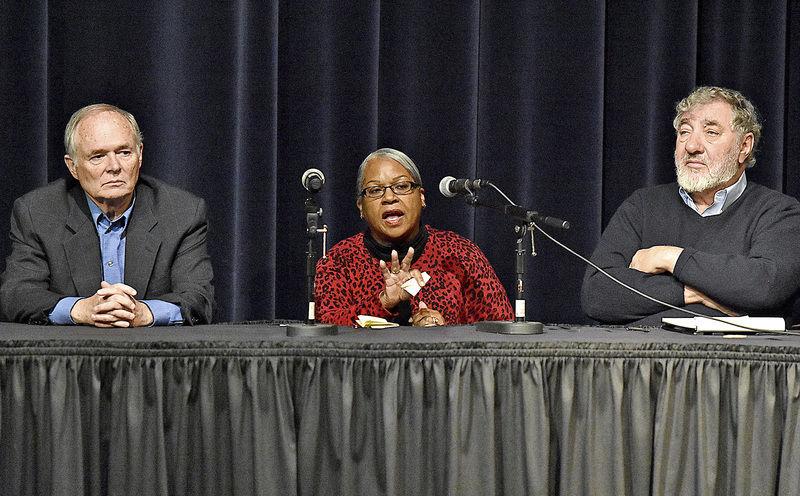 On Sunday April 24th at 2PM the public is invited to the
Gov. Hulett C. Smith Theater at Tamarack to listen to a discussion about Mount Hope West Virginia's racial
history. These discussions are focused around two oral recordings produced by the Mountain of Hope
Organization.
On Sunday April 24th at 2PM the public is invited to the
Gov. Hulett C. Smith Theater at Tamarack to listen to a discussion about Mount Hope West Virginia's racial
history. These discussions are focused around two oral recordings produced by the Mountain of Hope
Organization.
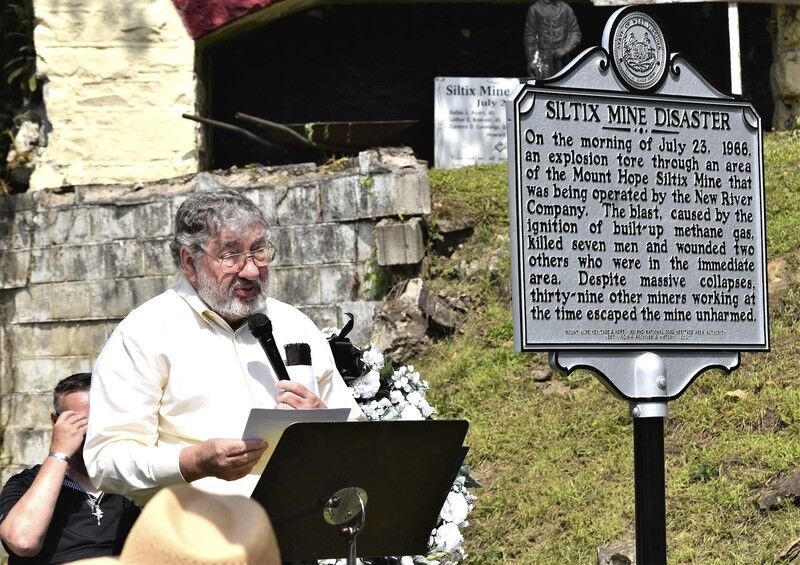 MOUNT HOPE — "I just want to begin by remembering
them all," an emotional Jack Spadaro said at the outset of his remarks Friday at the 55th anniversary of the
New River Company Siltix Mine explosion.
MOUNT HOPE — "I just want to begin by remembering
them all," an emotional Jack Spadaro said at the outset of his remarks Friday at the 55th anniversary of the
New River Company Siltix Mine explosion.
